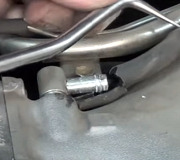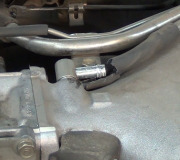First, stop on a slight incline, shift to neutral, release the brake pedal and see if the van creeps downhill on its own. If it doesn't suspect dragging front brake calipers.
Be sure the transmission is shifting into overdrive. I met one woman who said she was told to press the overdrive button each time she drove the van. That made it never shift into overdrive. Once she was set straight her fuel mileage went way up.
Tight universal joints will rob a lot of power from the engine.
Don't overlook spark plugs and wires. When one cylinder misfires, there will be unburned fuel and oxygen in the exhaust. The O2 sensor only detects unburned oxygen. That tells the Engine Computer to add fuel to bring the mixture back to normal, but it adds fuel to all cylinders. No matter how much fuel is added, the O2 sensor still sees that unburned air.
A similar problem can occur due to an exhaust leak ahead of the catalytic converter. Between the pulses of exhaust gas the momentum creates pulses of vacuum. That vacuum can draw in air. Again, the O2 sensor tells the computer to add more fuel to fix the perceived lean condition.
If you have access to a scanner you can read the fuel trim numbers. If they are very high positive, that means the computer is requesting more fuel in response to something. If the numbers are real high negative it means too much fuel is entering the engine and the computer is trying to fix that. The computer can only modify fuel mixture by plus or minus about 10 percent.
Caradiodoc
Monday, February 14th, 2011 AT 1:37 AM


